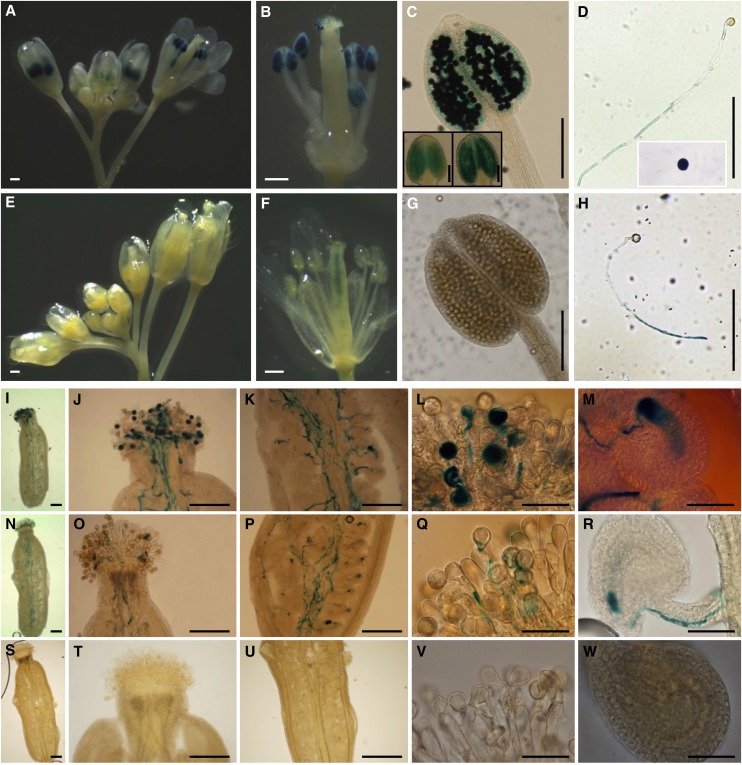Figure 3.
Differential Expression of NIP4;1 and NIP4;2 in Pollen.
GUS staining of NIP4;1pro:GUS and NIP4;2pro:GUS transgenic Arabidopsis plants. Results were consistent among the lines. Bars = 500 µm in (A), (B), (E), and (F), 200 µm in (C), (D), (G) to (K), (N) to (P), and (S) to (U), and 50 µm in (L), (M), (Q), (R), (V), and (W).
(A) to (C) NIP4;1pro:GUS flowers showing GUS activity in developing anthers and mature pollen grains. Insets in (C) show GUS activity in two different stages of pollen development.
(D) NIP4;1pro:GUS pollen tube germinated in vitro and mature pollen grain (inset) showing GUS activity.
(E) to (G) NIP4;2pro:GUS flowers showing GUS activity in the transmitting tract of the pistils (F) but not in the developing anthers or mature pollen grains.
(H) NIP4;2pro:GUS pollen tube germinated in vitro for 4 h showing strong GUS activity in the tube.
(I) to (M) Wild-type pistils hand-pollinated with heterozygous NIP4;1pro:GUS pollen showing GUS activity in pollen grains and tubes.
(N) to (R) Wild-type pistils hand-pollinated with homozygote NIP4;2pro:GUS pollen showing GUS activity in pollen tubes.
(S) to (W) Wild-type pistils hand-pollinated with wild-type pollen used as a negative control.
(I), (N), and (S) Pollen grains and tubes in a pistil.
(J), (O), and (T) Pollen tubes entering the style.
(K), (P), and (U) Pollen tubes growing through the style.
(L), (Q), and (V) Pollen grains germinating at the stigma surface.
(M), (R), and (W) A pollen tube discharging in an ovule.

